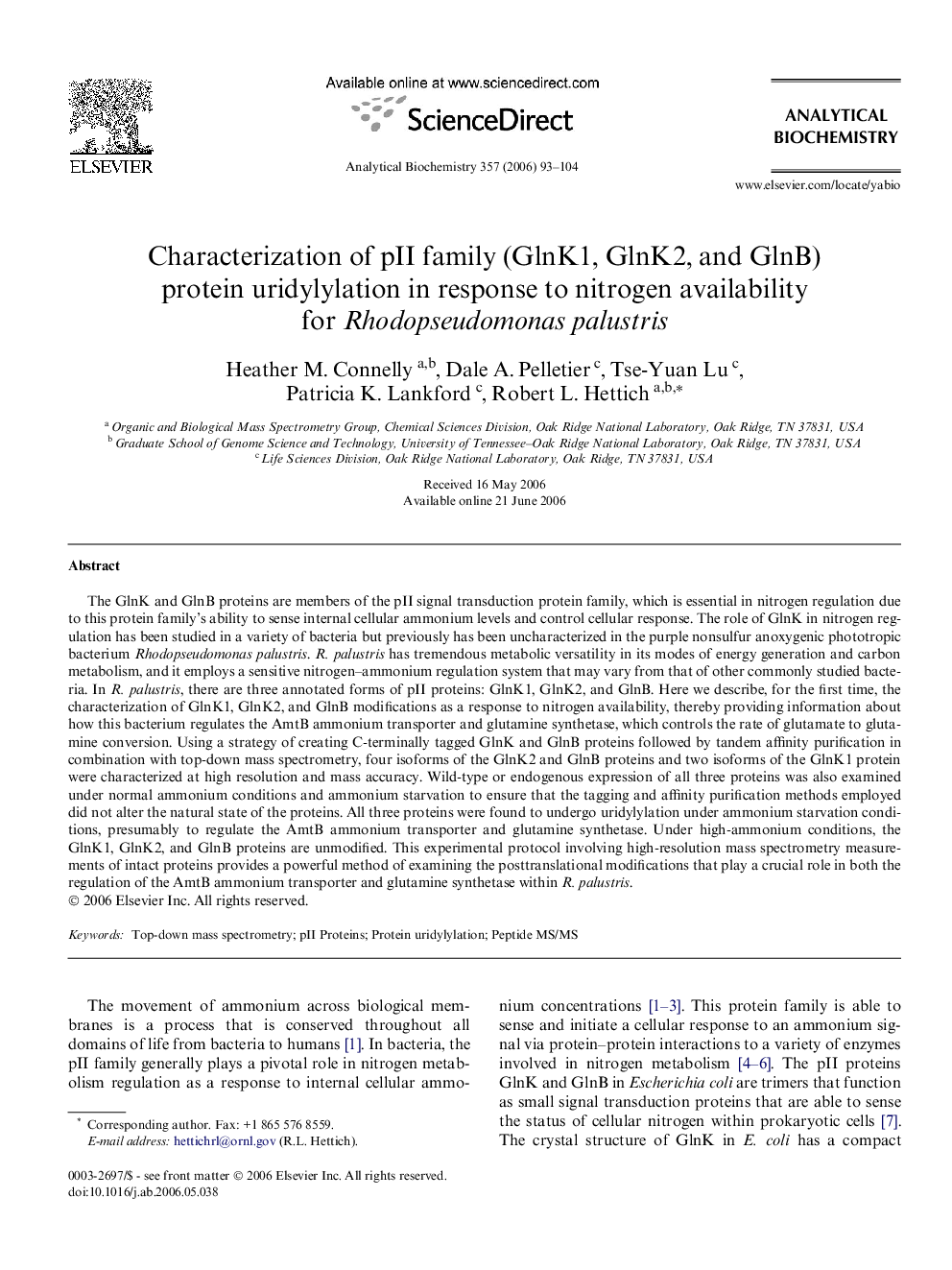| کد مقاله | کد نشریه | سال انتشار | مقاله انگلیسی | نسخه تمام متن |
|---|---|---|---|---|
| 1175839 | 961820 | 2006 | 12 صفحه PDF | دانلود رایگان |

The GlnK and GlnB proteins are members of the pII signal transduction protein family, which is essential in nitrogen regulation due to this protein family’s ability to sense internal cellular ammonium levels and control cellular response. The role of GlnK in nitrogen regulation has been studied in a variety of bacteria but previously has been uncharacterized in the purple nonsulfur anoxygenic phototropic bacterium Rhodopseudomonas palustris. R. palustris has tremendous metabolic versatility in its modes of energy generation and carbon metabolism, and it employs a sensitive nitrogen–ammonium regulation system that may vary from that of other commonly studied bacteria. In R. palustris, there are three annotated forms of pII proteins: GlnK1, GlnK2, and GlnB. Here we describe, for the first time, the characterization of GlnK1, GlnK2, and GlnB modifications as a response to nitrogen availability, thereby providing information about how this bacterium regulates the AmtB ammonium transporter and glutamine synthetase, which controls the rate of glutamate to glutamine conversion. Using a strategy of creating C-terminally tagged GlnK and GlnB proteins followed by tandem affinity purification in combination with top-down mass spectrometry, four isoforms of the GlnK2 and GlnB proteins and two isoforms of the GlnK1 protein were characterized at high resolution and mass accuracy. Wild-type or endogenous expression of all three proteins was also examined under normal ammonium conditions and ammonium starvation to ensure that the tagging and affinity purification methods employed did not alter the natural state of the proteins. All three proteins were found to undergo uridylylation under ammonium starvation conditions, presumably to regulate the AmtB ammonium transporter and glutamine synthetase. Under high-ammonium conditions, the GlnK1, GlnK2, and GlnB proteins are unmodified. This experimental protocol involving high-resolution mass spectrometry measurements of intact proteins provides a powerful method of examining the posttranslational modifications that play a crucial role in both the regulation of the AmtB ammonium transporter and glutamine synthetase within R. palustris.
Journal: Analytical Biochemistry - Volume 357, Issue 1, 1 October 2006, Pages 93–104